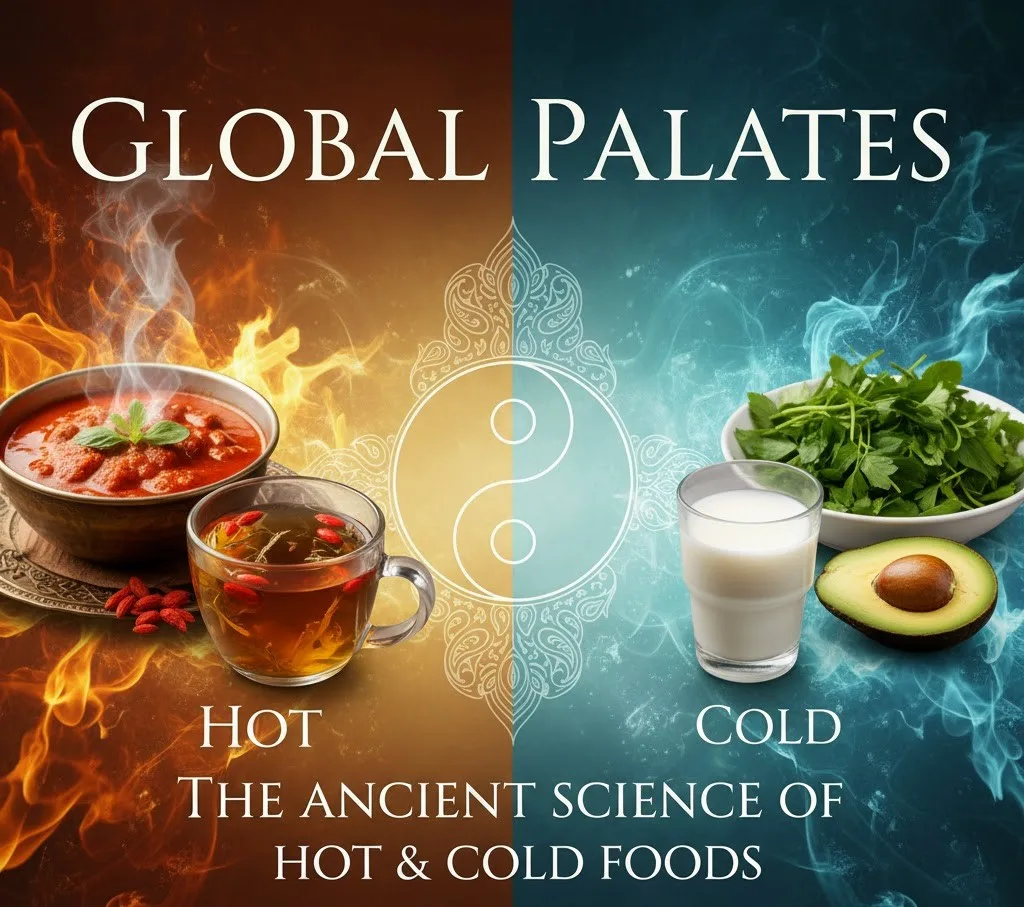The concept of classifying foods, herbs, and bodily conditions as "Hot" (Yang/Garmi) and "Cold" (Yin/Sardi) is far from a local tradition. It is a foundational principle of medicine and dietetics that has been adopted, adapted, and practiced across various cultures for millennia, representing one of the world’s most enduring traditional health systems.
The Greco-Persian Roots: The Humoral Foundation
The system described in traditional Persian medicine (Unani or Traditional Iranian Medicine) is the most direct descendant of the original Western framework:
-
Origin: The concept originated with Ancient Greek physicians like Hippocrates and Galen, who developed the Humoral Theory. This theory posited that the body was governed by four vital fluids (humors)—Blood, Phlegm, Yellow Bile, and Black Bile—each associated with two of the four qualities: Hot, Cold, Wet, and Dry.
-
Persian Codification: Arab and Persian scholars, notably Avicenna (Ibn Sina), preserved and expanded this knowledge into the Unani system. In this tradition, an individual’s constitution (Mizaj) is determined by the balance of these humors, and foods are classified as Hot and Dry (Safra), Cold and Wet (Balgham), etc., to restore balance.
This classification system spread throughout the Middle East, South Asia (where Unani is an established practice), and even influenced folk medicine in parts of Southern Europe and Latin America.
Global Cousins: Independent and Adapted Systems
While the Humoral Theory provided a structured model, other major traditional medicine systems developed parallel concepts:
1. Traditional Chinese Medicine (TCM)
TCM utilizes the concept of Yin and Yang, the complementary opposites that govern the universe and the body's energy (Qi).
-
Classification: Foods and herbs are classified energetically as Hot (Yang), Cold (Yin), Warm, Cool, or Neutral.
-
Goal: A "hot" illness (e.g., fever, inflammation) requires "cold" (Yin) foods to cool and soothe, while a "cold" illness (e.g., chills, fatigue) requires "hot" (Yang) foods to warm and stimulate.
2. Ayurvedic Medicine
Originating in India, Ayurveda is based on balancing the body's three vital energies, or Doshas (Vata, Pitta, Kapha).
-
Classification: Foods are categorized by their intrinsic Potency (Virya), which is either Hot (Ushna) or Cold (Sheeta), and is used to adjust the predominant Dosha in a person. Pitta (fire/water) is associated with heat, while Kapha (water/earth) is associated with cold.
3. Mesoamerican Folk Medicine
Across various indigenous and mestizo communities in Mexico and Central America, a popular form of folk medicine operates on a similar hot/cold dichotomy.
-
Practice: Foods and illnesses are categorized as caliente (hot) or frío (cold). Ailments are treated with remedies of the opposite quality to restore balance, often regardless of the physical temperature of the substance.
The Modern Critique: Beyond Temperature
Despite its global prevalence, the "Hot and Cold" theory faces challenges from contemporary science, as highlighted in the original Persian text:
| Traditional Explanation | Modern Scientific Explanation |
| "Hot" foods cause pimples and inflammation. | Pimples are caused by insulin spikes from simple sugars or inflammatory molecules like Omega-6 from certain fats. |
| A negative reaction to a food is due to its "Cold" nature. | Specific reactions like hives or indigestion are typically due to a food allergy or intolerance to a particular protein or compound. |
| Diseases result from an imbalance of humors/energies. | Diseases are understood to result from specific causes, such as pathogens, genetic predispositions, or measurable imbalances in hormones, nutrients, and immune function. |
While the traditional classifications offered a rational, albeit outdated, framework for diet and health when knowledge of chemistry and biology was limited, modern science provides precise, verifiable explanations for why foods affect the body. The global persistence of the Hot and Cold system today is a testament to its cultural significance, even as health practices increasingly incorporate evidence-based nutritional science.

